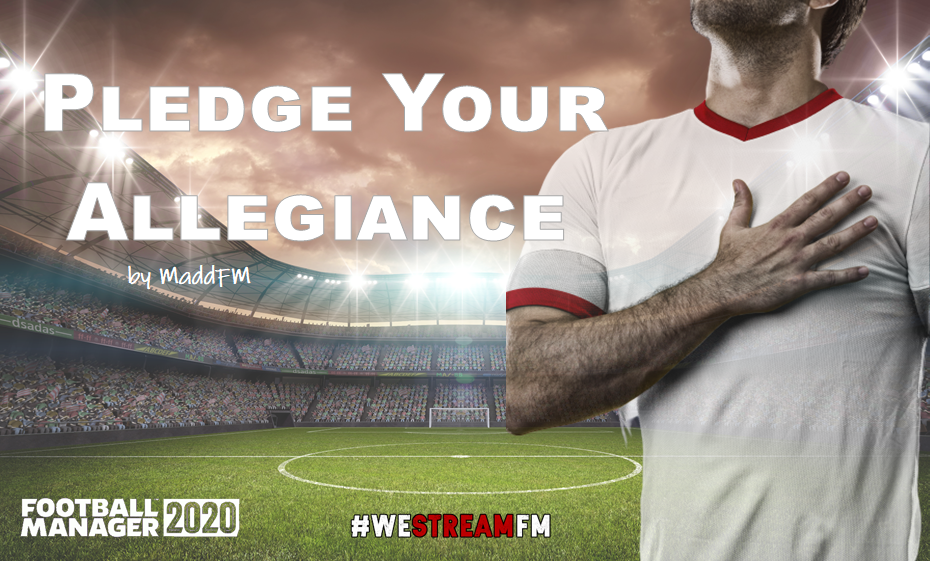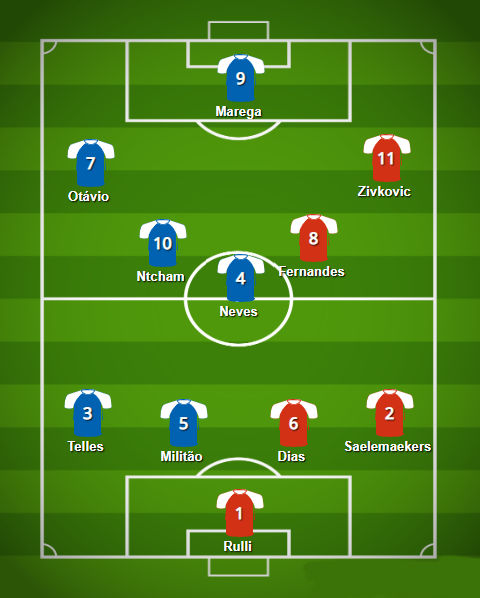Name a player that has gained Senior International Caps for Argentina, Colombia and Spain. I’ll wait.
Impossible I hear you say, how could anyone play for three different countries? Well, wind back to the 1950’s and you would have been able to watch one of the greatest players of all time do exactly that. Alfredo Di Stefano, more commonly known for scoring 216 goals in 282 appearances for Real Madrid, initially made his debut for his home country Argentina back in 1947 and scored 6 goals in 6 appearances to help them win the Copa America the same year. Unfortunately they were to be his first and last caps for his home nation - player strikes and a dispute with the Brazilian FA led Argentina to withdraw from qualification for the 1950 World Cup as well as the following two Copa America tournaments, and shortly afterwards Di Stefano moved to Colombia where he went on to to score 92 goals in 101 appearances for Bogota based side Millionarios. It was at this point that Di Stefano made 4 appearances in a Colombia shirt, selected to play a group of friendly games that were not recognised by FIFA as official international games - not sure if that would fly in the modern era, but hey at this stage 2020 is capable of anything.
Fast forward to 1956 and Di Stefano has lived and played for 3 years at Real Madrid, absolutely smashing La Liga helping them win back to back league titles and dominating the goalscoring charts year-on-year. After becoming a naturalised citizen, Di Stefano scores a hat-trick on his debut for Spain and goes on to score 23 goals in 31 appearances - the third international jersey Di Stefano has now worn in his career; imagine if Cristiano Ronaldo somehow managed to play for Portugal, Spain and Italy?!
One of the original GOATs 🐐
Nowadays of course, players tend to have to “pledge their allegiance” and somewhat officially declare which nation they will play for - often causing controversy as we have seen when the likes of Declan Rice, Jack Grealish and Diego Costa all caused much debate on the subject when changing/declaring their allegiance. According to FIFA, an uncapped player is eligible to play for a nation if he/she meets the following criteria:
Born on the territory of the relevant association
Biological mother or biological father was born on the territory of the relevant association
Grandmother or grandfather was born on the territory of the relevant association
He/she has lived continuously for at least five years after reaching the age of 18 on the territory of the relevant association
Many nations have strategically taken advantage of this in order to bolster their ranks; Ireland’s successful World Cup teams of 1990 and 1994 contained a host of British-born players with Irish heritage including the likes of Andy Townsend, Tony Cascarino, Ray Houghton and Jason McAteer. This has continued all the way to present times and in the past few years young players such as Wayne Rooney, Harry Kane and Tim Cahill were all approached to play for Ireland due to their Irish connections.
These days when a young player with dual nationality/eligibility arrives on the scene, an instant battle almost ensues - when Adnan Januzaj burst onto the scene at Old Trafford back in 2013, a three way contest for his allegiance appeared to take place between England, Kosovo and Belgium before he eventually declared for the latter in 2014. More recently a similar situation occurred with 17 year old Dortmund Midfielder Giovanni Reyna, son of ex-USA international Claudio Reyna; born in England, holding a Portuguese passport from his mother’s side and eligible for both Argentina and USA on his father’s side, much debate was held about which nation he would declare for before he seemingly quashed all rumours by stating he intended to play for his “home” nation, the USA. (Interestingly he is listed as “English” in FM20 but not fully declared 👀).
How is all this connected to Football Manager? Why not try the same - taking over an International side and attempting to convince a World Class player to declare for that nation based on their heritage/bloodline. Reckon you have what it takes to convince them to change allegiance and help you lead their new nation to glory?
5 Undeclared Players with Dual Nationality / Eligibility in FM20
1. Gabriel Martinelli (Brazil → Italy)
Born in Brazil but eligible to play for Italy through his father - could one of the hottest prospects to come through the ranks at Arsenal in years be the catalyst in bringing international success to the Azurri for the first time since 2006? More importantly - can you be the one to lure him away from playing for Brazil?
2. Harvey Barnes (England → Scotland)
The highly rated Leicester star is already 21 at the start of FM20 - if he doesn’t get capped for England soon, could he have his head turned North and help lead Scotland to success on the international stage?
3. Josha Vagnoman (Germany → Ivory Coast)
Competition at right-back for Germany is fierce with the likes of Joshua Kimmich and Lukas Klostermann playing for the top clubs in the Bundesliga. Vagnoman is eligible for the Ivory Coast through his father and should he not get capped for the German side, perhaps he can be swayed to bolster an already talented Ivory Coast side? Potential future team-mate Wilfried Zaha is no stranger to this debate.
4. Houssem Aouar (France → Algeria)
Granted - the chances of this kid not getting capped for France are pretty slim but seeing as he is still uncapped and undeclared in FM20, adding Aouar to an Algeria squad that also boasts the likes of Mahrez, Slimani, Ghoulam and Bennacer is a mouth-watering prospect..
5. Eddie Nketiah (England → Ghana)
Ghana boast a strong side with the likes of Thomas Partey, Kwadwo Asamoah and Baba Rahman among their ranks but not since Tony Yeboah (#thunderbastard) have they had a top quality centre-forward lead the line at international level…could the man the man loved by FMDoop like no other be tempted to change allegiance should he fail to break into the England side?
Make no mistake - convincing one of these guys to switch allegiance is no easy feat even in FM; you could try some of the tips suggested by FridayNightFM in his piece for The Byline about Signing Uninterested Players in FM e.g. watching their games, having them scouted etc however your best hope is that they remain uncapped long enough to become impatient at not earning an international cap as yet. Either way, giving this a try as a new save challenge or side-project to your existing save could make for an interesting international #narrative - let’s not even begin to discuss Brexit. There are plenty of other players of a similar nature who are yet to be capped or declare for a nation - adding the “Second Nationality” filter/column in the player search is a great way to identify these, otherwise stay tuned for Part II where we will look at some of the other dual nationality players that we hope are waiting for your call.
Thanks for reading - feel free to share your thoughts below or on Twitter and let us know if you succeed!
Cheers,
Enjoyed this? Check out more of MaddFM’s WeStreamFM posts here where you can also find a host of great content from the WeStreamFM team and our guest authors. You can also find his own blog here where he is currently attempting to bring Greuther Fürth to the bright lights of the Bundesliga.




